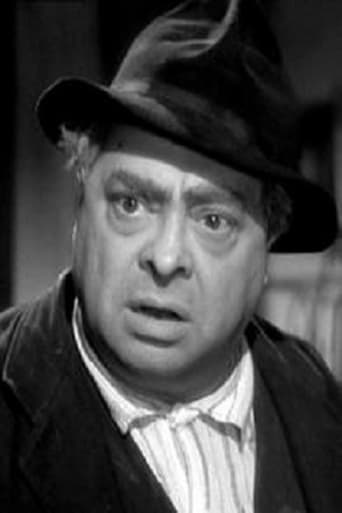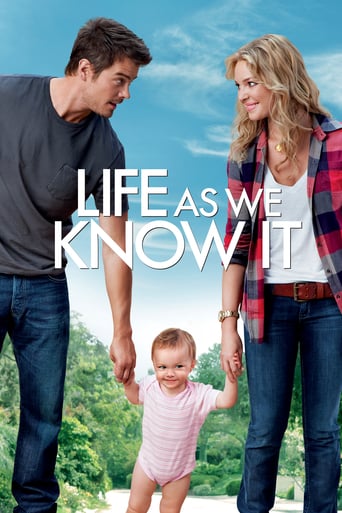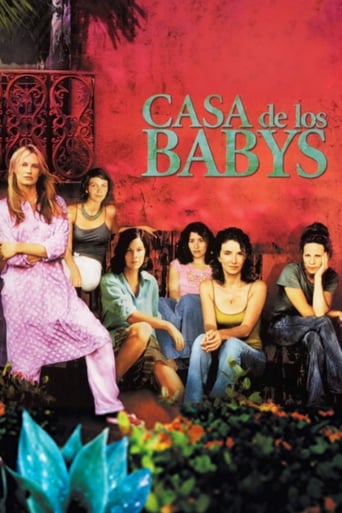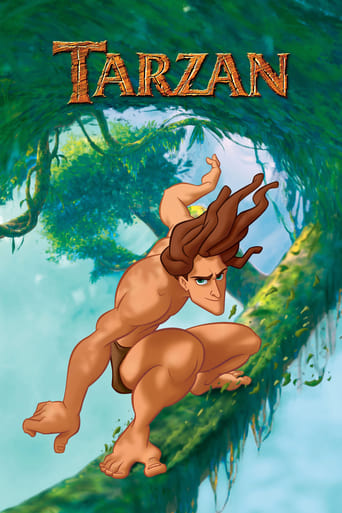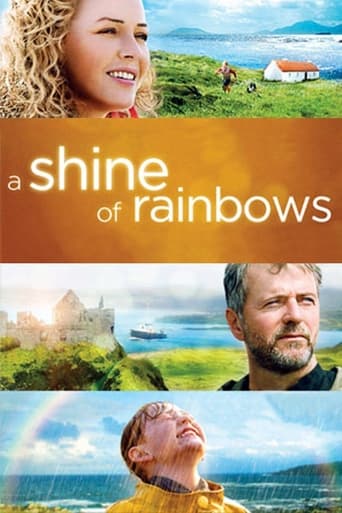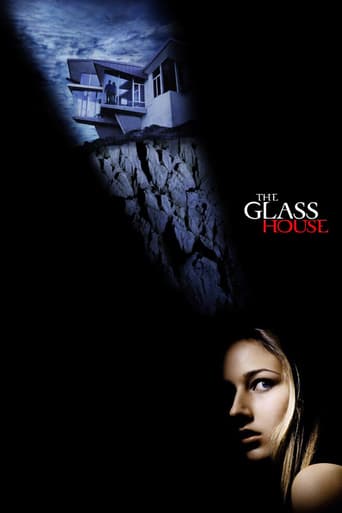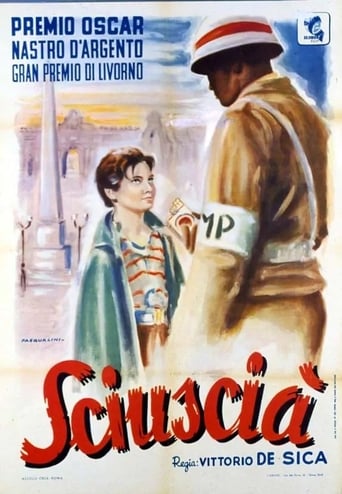

Shoeshine (1947)
At a track near Rome, shoeshine boys are watching horses run. Two of the boys Pasquale, an orphan, and Giuseppe, his younger friend are riding. The pair have been saving to buy a horse of their own to ride...
Watch Trailer
Cast
Similar titles

Reviews
Save your money for something good and enjoyable
Masterful Movie
It's funny watching the elements come together in this complicated scam. On one hand, the set-up isn't quite as complex as it seems, but there's an easy sense of fun in every exchange.
The film may be flawed, but its message is not.
The principle characters in this drama are a couple of poor children. These are kids to dig and scrap for a little happiness. One has not parents; the other's parent has her own problems. These kids seem to thrive on their own hard work. The war is on and the soldiers for whom they shine shoes continually put them off instead of paying them. They are also susceptible to money-making schemes and are sometimes victimized by bad people. After committing a petty crime, they are put in a boy's detention center because the police think they have done way more. Now the rules change. Where they had relative freedom, despite poverty, they are now at the mercy of a disinterested constabulary. The authorities need a confession. When none is forthcoming, evil manipulation comes into play. DeSica in this film and others of the time, show the natural destruction of the future of a culture, lying in the wake of Mussolini's fascist comedown. This is quite a wonderful film but very hard to watch.
A couple of street kids become involved with some unsavory characters and end up in a prison for juvenile delinquents. De Sica was a leader of the Italian neo-realism movement, and this is celebrated as the earliest of his masterpieces. Unfortunately, it is not in the same class as "Bicycle Thieves" and "Umberto D." It is ironic that this is (or was) regarded as realistic because it has some embarrassingly melodramatic scenes. While the two kid actors are pretty good, the adults are all portrayed as ruthless, one-dimensional villains, showing little regard for the troubled youth. Perhaps De Sica did this on purpose to expose the conditions at such places in Italy, but it doesn't make for good drama.
"Sciuscia" one word carrying the poignant context of a devastating story, as the Italianization of the word 'Shoeshine', the name given to the little 'ragazzi' who shined GI's boots for a living. We're in 1945, when Italy was still recovering from the ashes of WWII. In one title, the tone is set, in an impoverished Italy, the main protagonists are all children carrying in their hands and hearts the hope of a slow rebirth. This light of hope is even conveyed in the opening scene when two kids, two friends, Pasquale and Giuseppe ride horses in the middle of a forest under a bright sunshine. Their fetish-horse is a white one, the fastest one, named Bersagliere, and both dream of owning him. Like in "Bicycle Thieves" or "Umberto D." the simplest things make the most inspirational statements about humanity, a bicycle is synonym of hope, a little dog is the only companionship an old man can dream of, in "Sciuscia", the horse is the dream, the exhilarating feeling of freedom inhabiting Pasquale and Giuseppe's hearts and the cement of a seemingly unbreakable friendship.Friendship, if anything, "Sciuscia" is the heart-warming story of a friendship, before it would turn into the heart-breaking chronicle of its destruction, all the more tragic because both couldn't foresee their lives without each other, and De Sica doesn't need to make it said, it's obvious. Pasquale is an orphan who lives in Giuseppe's home and while Giuseppe, younger and more immature, complains about having to give part of his 'shoeshine' money to his family, Pasquale wished he had a family to give money to. These boys have hopes, dreams, principles and even an innocence that haven't been undermined yet by a tragic turn of events. Unfortunately, Giuseppe has an older brother Attilio, who works for a fence named Panza, Attilio incarnates the eventual danger that Giuseppe might end like him and it's not coincidental that we meet him when Giuseppe talks to his child love, a pretty little girl who becomes, at that moment, the last link to childhood before the irreparable would be committed.As I said, "Sciuscia" carries the whole story in its title, it was in 1945, the GI were still here, and while the political authority was in reconstruction, many Italians made money through Black Market. Giuseppe and Pasquale were given a mission: to sell some US blankets to an old-lady, unknowing that Attilio and Panza would come up later passing as cops to steal the poor woman. Given enough money to buy the horse, they'll live the happiest parenthesis of their lives, riding Bersagliere, an exciting state of grace interrupted when they're questioned by the cops regarding the stealing of the old lady's money. Refusing to break the Omerta, and having no proof against them, both kids agree not to talk and patiently spend their time in the juvenile detention center."Sciuscia" turns into a powerful social commentary about juvenile delinquency as the only desperate answer to difficult economical conditions, when kids were put in the same trunk with prostitutes, when some were forced to steal to nourish their family. As the trunk leaves the street, both Giuseppe and Pasquale are precociously leaving childhood, incarnated by the little girl who follows the trunk. And the center is filmed with a documentary-like style that finds the right tone between pathos and cold realism, De Sica trusts our intelligence enough not to portray the kids as little angels, some of them lie, frighten the newcomers, provoke fights, but some others are indeed victim of cruelly sad circumstances and a slow bureaucracy, like the kid named Rafaelle who can't be put in a sanatorium despite a severe lung-condition. Even the administrators are not all one-dimensional, they're men who went through Fascism, a war, and only use violence because disorder would be much worse.Fatally, Pasquale and Giuseppe have their friendships affected by their detention, starting at the moment they're sent in different cells: their cries and shouts, the way they keep their hands hooked to each other is an extraordinary display of desperate need to be together. Their separation only exposes them to the worst, to the influence of their respective groups that would slowly and progressively drive them apart. And it starts at the pivotal moment of the film when one of the guards pretends to hit Giuseppe to force Pasquale to talk, it's out of his love that Pasquale breaks his premise, and starts the turn of events that will destroy their friendship. Giuseppe will think of Pasquale as a snitch who sold his brother, and as revenge, sets him up in return, putting a deathblow on their friendship.It's impossible to describe with words the tragic path the movie takes, and its extreme realism only makes it worse. If "Bicycle Thieves" is regarded as one of the saddest films ever, there still is an imperceptible light of hope at the end. In "Sciuscia", the film doesn't have a sad score, the main theme is the joyful riddle-like music of the white horse that reminds of childhood's insouciance but God, it cruelly contrasts with the slow transformation that involves the two protagonists, even physical, the loss of innocence is one thing, but what can be sadder than a destroyed friendship. Killing the myth of the friendship built behind the bars, the film demonstrates how authority, bureaucracy, order can annihilate the most beautiful aspects of humanity, and finally how fragile are the most beautiful virtues. But I wonder if it's not sadder than the film itself, that one of the greatest masterpieces of Italian neo-realism, a movie I knew about through Scorsese's documentary about his Italian influence and Pauline Kael's review, has only 14 reviews (counting mine) while "The Avengers" already has 1207. One thing for sure, no last minute of a film haunted me as much as in "Sciuscia", while I desperately looked for something to keep my faith on humanity.
"I have been ruined by lack of money. All my good films, which I financed by myself, made nothing. Only my bad films made money. Money has been my ruin." - Vittorio De Sica As good as his more well known known neorealist works ("Bicycle Thieves", "Umberto D" etc), Vittorio De Sica's "Shoeshine" traces the lives of two shoeshine boys. Orphans, poor, estranged and struggling to survive, the duo find themselves drifting inexorably toward a life of crime. Much of the film's later half documents the boys' lives within juvenile facilities, where the state's attempts at reformation are shown to have only negative effects. Like many neorealist works, "Shoeshine" was well regarded in the West upon release (nominated for several Oscars), but was condemned by Italian officials for daring to point fingers at the nation's postwar failings.Taking place a year after the end of WW2, the majority of "Shoeshine" watches as the two boys – Giuseppe and Pasquale – prowl the street's of Rome, hustling cash, shining the shoes of American troops and dreaming of owning a beautiful horse. The horse, symbolic of freedom, self-worth, beauty, upward mobility, hope etc, epitomises the shredded shared aspirations of Italy's underclass. The film then begins to resemble the works of Charles Dickens, with their street urchins, likable ragamuffins and soot smeared daydreamers. Here the "horse" - which Giuseppe and Pasquale buy using blackmail money - is shown to be unattainable precisely UNLESS the boys resort to crime. It's the cruelest poverty trap, the duo arrested the moment they realise their dreams, which echoes earlier scenes in which De Sica has the kids visit a clairvoyant, a sequence which points to a kind of hard, social determinism. The boys aren't just fated to a life of suffering, society wills them into crime.The film becomes most interesting when the boys enter prison and various "reformation facilities". Loyalties are tested, the kid's are beaten, hearts harden, betrayals are frequent and we're introduced to hordes of other confined children, who seem to be perpetually whimpering in the dark, let out occasionally, if they're lucky, only to meet deeply embarrassed parents. At its best, the film shows how prisons purport to offer reform and redemption but serve only to warp incarcerated individuals, hardening them, coarsening them, making them worse. The film would be deeply influential on Luis Bunuel's "Los Olvidados" (Bunuel cites early De Sica as a big influence), which was released in 1950. De Sica's "Shoeshine" was released in 1946, with Rossellini's similar film, "Germany, Year Zero", released two years later in 1948. Rossellini's masterpiece is arguably better, but wouldn't exist without the groundwork De Sica lays here."In handling the camera I feel that I have no peer," Orson Welles once said. "But what De Sica can do, I can't do. I ran his 'Shoeshine' recently and the camera disappeared, the screen disappeared; it was just life." At the time, many felt this way toward the neorealist movement. It's "authenticity" was new, gritty, these films offered a never-before-seen "heightened reality". But time is rarely kind to films which overtly attempt to "recreate real life". Once the novelty wears off you're often left with something contrived, calculated, "documentarian touches" revealing themselves to be (paradoxically) both sensationalistic and not sensationalistic enough next to whatever is the newest incarnation of "heightened reality". As a mainstream example, it's why Scorsese, son of neorealists, keeps getting more and more ridiculously manic, a kind of pornographic escalation into further and further layers of hyper-realism. Meanwhile, ground-zero reality gets increasingly banal.So "Shoeshine", like most neorealist works, is odd in that it's now both "not gritty enough" whilst revealing itself to "have never been realistic". It's a weirdness specific to neorealism, a movement which continually, with much futility, tries to capture a "reality" that always seems to exists beyond it. And of course like most neorealist works there is little metaphysical depth here, little of interest beside what we directly see (which is why Italian metaphysicians like Antonioni and Pssolini often feel more modern, more affecting, then the Viscontis, Rossellinis and De Sicas). On the plus side, all these flaws are tempered by De Sica's own particular brand of pathos, which is directly influenced by the poetic realism of the French, specifically Renoir, whom De Sica rightfully admired. And like Renoir, De Sica zeroes in on poverty, hardship, intergenerational estrangement and the sense of general moral decay and vacuity cast by Fascist regimes. In typical Renoir fashion, De Sica also codes class relationships cleanly but subtly, much of the film preoccupied with contrasts in "high" and "low", with characters towering over others, or with strategically placed stairs, top floors, bottom floors, ascents and descents. This up/down dynamic extends to the film's title and the chief occupation of the shoeshine boys, who must kneel submissively at the feet of American soldiers, in a national image of defeat and shame.8.5/10 – Worth one viewing. See "Germany Year Zero", "The Garden of the Finzi Continis", "Wendy and Lucy", "Land of Plenty", "Frozen River" and "Umberto D".

